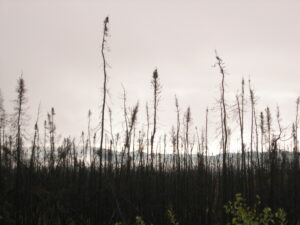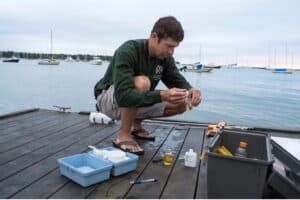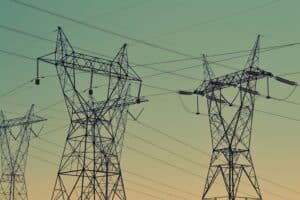Late July’s oppressive heat forecast isn’t normal
A punishing heat wave will bring hot temperatures to eastern US and linger for several days, underscoring how climate change heats things up.

As the clock ticks down the final days of July, thermometers will climb across much of the eastern half of the United States, creating a dangerous and long-lasting heat wave that will put millions at risk of heat stroke and other illnesses.
Those in the path of the heat wave should plan to take extra measures to stay cool through at least July 30. Keep things chill by staying in air-conditioned spaces, visit friends with pools, pile up the popsicles and lemonade and pull out the recipe for your favorite cold summer salad.
At Fort Stewart-Hunter Army Airfield in Georgia, dozens of people in uniform position themselves along the edge of a pine stand as multiple aircraft approach overhead and a helicopter starts dropping incendiary devices into the forest in front of them. This may sound like a military training exercise but it is not. It is the NASA FireSense campaign, co-led in partnership with the Department of Defense and the U.S. Forest Service, a carefully planned and coordinated set of scientific experiments being used to better understand wildfires.
As wildfires get more frequent, intense, and destructive due to human activity, scientists are coming up with new and creative ways to study them. This is what brought me to this collaborative project at Fort Stewart in March 2025 for a week of prescribed burns and intensive wildfire research.
I’m an ecologist at Woodwell Climate Research Center working to understand how climate change is altering wildfires in boreal forests and the Arctic. I improve ecosystem models— computer software programs that simulate how ecosystems work— to better predict wildfire under a changing climate. This requires a holistic understanding of wildfires: from the way plants grow and produce fuels, to the weather that leads to fires, to how fires spread and grow. For me, getting out in the field is an important way to confirm that my computer simulations are behaving like real fires.
Wildfires can be a difficult and dangerous environment in which to do research. For this reason, wildfire research is sometimes done during prescribed fires. Prescribed or controlled burns are lit by trained professionals to reduce the buildup of natural fuels and to benefit plants and wildlife, especially in ecosystems that historically had regular wildfires. Fort Stewart has one of the largest prescribed fire programs in the United States, burning around 115 thousand acres every year. Burns are performed both to protect soldiers from wildfires that can easily start during military training exercises, as well as to manage the base’s pine forests for the recovery of several threatened and endangered species including the red-cockaded woodpecker and the smooth coneflower. This makes it a great location to do research. Unlike wildfires, controlled burns allow researchers to know exactly when and where a fire will occur, giving them time to plan safe research projects.
This most recent experimental burn campaign represents a new level of cooperative effort to study wildland fire at all stages. While the Environment and Natural Resources Division Forestry Branch at Fort Stewart conducted the prescribed burns, researchers from NASA and seven DoD Strategic Environmental Research and Development (SERDP) funded research projects deployed weather stations, fire sensors, cameras, and emberometers on the ground. NASA flew three aircraft overhead with advanced sensors aimed at the fire below and a radar truck monitored the smoke plume. Fuels were measured with LIDAR scanners before and after the fires to detect what burned. During the fire, fuel moisture was measured. The ability to study conditions before, during, and after a fire gives a more complete picture of fire behavior compared to a wildfire where researchers are often limited to data gathered after the threat of the fire has passed.
Working together like this makes for more than just good science, it also builds community. Like all scientists, wildfire researchers tend to be specialized, with some studying fuels, while others study smoke, or the energy produced by the flames. Bringing these people together allows them to share ideas, discuss problems, and learn new experimental techniques. These connections and conversations are what spark new ideas and collaborations that push science forward. For me this was a valuable opportunity to meet other researchers, discuss ideas, and to learn how to perform experiments safely in a fire, something that could help me improve my wildfire models in the future.
The FireSense campaign at Fort Stewart went off without a hitch. The data collected during the campaign will take many months to analyze, but the hope is that this campaign will act as a model for a new era of cooperative wildfire research. Planning for another campaign next year in Florida is already under way and in the meantime I’ve returned to my lab to refine my code and apply what I’ve learned in preparation for the next fire.
Woodwell Climate is pleased to announce the appointment of Thomas (Tod) J. Hynes III as Chair of the Board of Directors, as well as the addition of three new board members, Jainey Bavishi, Jean A. Rogers, and Aniket Shah. The new directors began their three-year terms in June.
Hynes succeeds C. Gail Greenwald, who served as Chair of the Board from 2022 to 2025. Over the last two decades, Hynes has started and invested in over 20 companies in the climate and energy space.
Jainey Bavishi is a climate resilience expert who has led efforts across federal, local, and nonprofit sectors including serving in the Biden administration as Assistant Secretary of Commerce for Oceans and Atmosphere and Deputy Administrator of the National Oceanic and Atmospheric Administration. Jean Rogers, founder of the Sustainability Accounting Standards Board (SASB), is a respected global leader in the measurement and management of environmental impacts associated with sustainable development and financing the energy transition and climate solutions. Aniket Shah has spent his career at the intersection of global finance, economic development, and climate change. He leads a research and advisory effort on energy transition and sustainable business efforts at Jefferies.
“I’m excited and grateful that these incredibly impressive individuals will be sharing their talents with us,” said Woodwell President and CEO, Max Holmes. “They bring tremendous energy, expertise, and insight and we are fortunate to have them join the Woodwell team.”
Bavishi, Rogers, and Shah replace Joseph J. Mueller and Stephanie Tomasky, who recently concluded their tenure.
About Tod Hynes
Hynes is a Senior Lecturer at MIT where he teaches a graduate course called Climate & Energy Ventures and advises the MIT Climate & Energy Prize which he also co-founded. He also serves as a Senior Advisor for Climate & Energy at the Martin Trust Center for MIT Entrepreneurship. Hynes is the CEO and Co-founder of Maigent, a company creating private AI tools that help experts amplify their skills and securely manage their information. He also founded Clymate Studios to help others help the climate.
About Jainey Bavishi
Bavishi is a distinguished expert in the field of climate adaptation and resilience. She most recently served as the Assistant Secretary of Commerce for Oceans and Atmosphere and Deputy Administrator of the National Oceanic and Atmospheric Administration, guiding national efforts on climate resilience, marine conservation, and the implementation of major federal investments under the Bipartisan Infrastructure Law and Inflation Reduction Act. Previously, she directed the New York City Mayor’s Office of Climate Resiliency and served in the Obama White House as Associate Director for Climate Preparedness. Earlier in her career, she led initiatives on disaster risk reduction in the Asia Pacific and supported equitable recovery efforts on the Gulf Coast.
About Jean Rogers
Rogers has spent her career integrating sustainability into mainstream investment analysis. Under her leadership of the Sustainability Accounting Standards Board, the organization created standards enabling investors to benchmark sustainability performance across 80 industries. Most recently, she was Blackstone’s Senior Managing Director and ESG Chairperson where she oversaw the firm’s integration of sustainability factors into asset management while serving on the investment committees for certain private equity and private credit funds deploying more than $12B globally toward energy transition and climate solutions. She is currently an operating advisor to private equity funds such as Pegasus and Palistar Capital. Rogers began her career as an environmental engineer for Arup leading sustainable development projects throughout the US, Europe, and Asia.
About Aniket Shah
Shah is Founder, Managing Director and Global Head of Sustainability, Transition and Washington Strategy at Jefferies where he leads a research and advisory effort for investors, corporates, and sovereigns on their energy transition and sustainable business efforts and advises clients on the interface between public policy and investment decision-making. He is also an Adjunct Assistant Professor at Columbia University’s School of International and Public Affairs. Shah previously held prominent roles at UBS, OppenheimerFunds, and Investec Asset Management, and in the public sector at the UN Sustainable Development Solutions Network and the Earth Institute at Columbia University.
For 1st time, fires are biggest threat to forests’ climate-fighting superpower
Forests play a major role pulling planet-warming carbon dioxide out of the atmosphere. As the world heats up, some forests are becoming emitters in their own right.

In 2023 and 2024 the world’s forests absorbed only a quarter of the carbon dioxide they did in the beginning of the 21st century, according to data from the World Resources Institute’s Global Forest Watch.
Those back-to-back years of record-breaking wildfires hampered forests’ ability to tuck away billions of tons of carbon dioxide, curbing some of the global warming caused by emissions from burning fossil fuels.
Keep reading on The New York Times.
Woodwell Climate Conversations: Turning the Tide
Climate Progress, Peril, and the Path Ahead
Join Gina McCarthy and Max Holmes for a timely conversation on how bold, science-based action drove historic progress—and what’s at stake as that progress faces new political threats.
Notes from an ecologist: Factoring in rivers and streams when studying bay health

On the morning of July 7, more than a hundred volunteers from Buzzards Bay Coalition Baywatchers fanned out to the more than 30 small embayments that surround Buzzards Bay to collect the first round of this summer’s four sets of water quality samples.
By mid-afternoon we had large and small bottles from more than 200 different stations lined up on the tables at the Woodwell Climate Research Center, where the samples enter an assembly line of different laboratory analyses that include different forms of nitrogen and the concentration of chlorophyll—the main pigment in algae and an excellent metric of the amount of algae in the water.
Read more on The Falmouth Enterprise.
Thirty-two thousand years ago this spring, in the eastern interior of Alaska, during an ice age so severe that the Laurentide Ice Sheet covered most of the continent of North America a mile thick, a Gwich’in man, dressed in neatly tailored, tanned, caribou skin pants and a shirt, walked around the forested edge of a lake, dragging a stick through the tall grass. At the end of the stick flickered a flame that leapt to the grass. The snow in the shadows of the trees blocked the fire’s path, so the flames could travel only into the dead grass that had accumulated, thinning some of the dead willows out in its maw.
Read more on Wildfire Magazine
As climate threats escalate, Rep. Leger Fernández leads charge to weather-proof America’s energy grid
Bill would create a first-of-its-kind federal weather data platform to help utilities prevent blackouts and protect families from extreme climate events.

As wildfires rage, floods surge, and power grids strain under record-breaking heat, U.S. Representatives Leger Fernández (NM-03), Casten (IL-06), Castor (FL-11), and Ross (NC-02) introduced the Weather-Safe Energy Act of 2025. This landmark bill will equip utilities with the cutting-edge weather data, modeling, and support they need to withstand the growing threat of extreme weather. The bill addresses a critical need at a time when the nation’s energy infrastructure faces unprecedented threats from increasingly frequent and severe extreme weather events, including hurricanes, wildfires, flooding, and droughts. Utilities and grid operators currently lack the sophisticated weather data and modeling tools necessary to prepare for these cascading risks.
Read more on Rep. Leger Fernández’s website.



